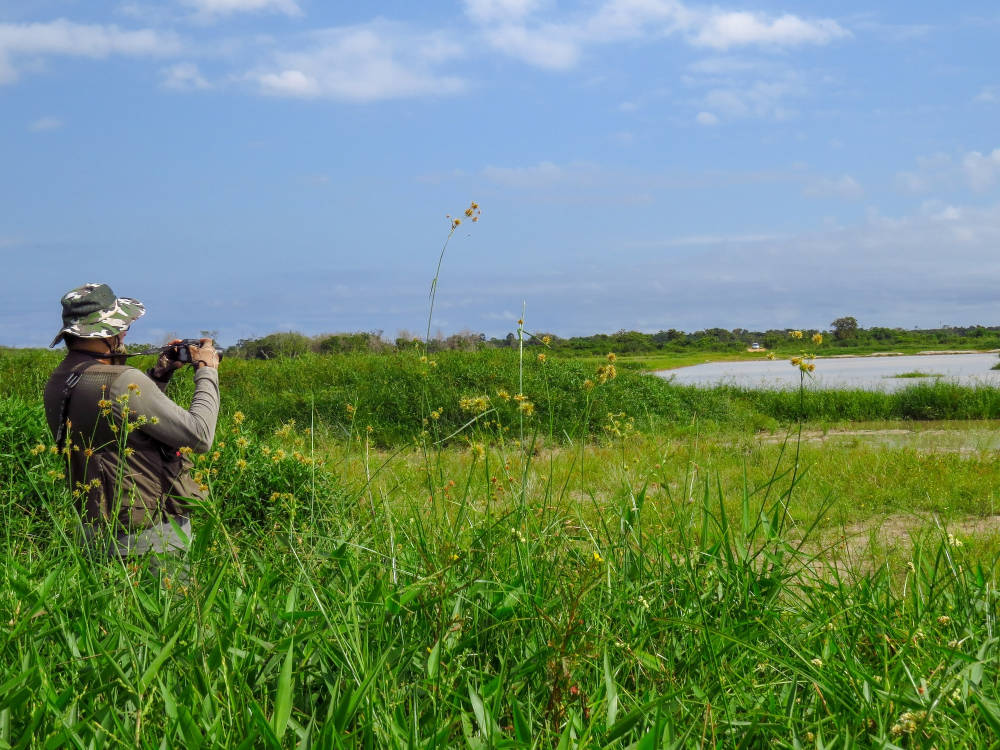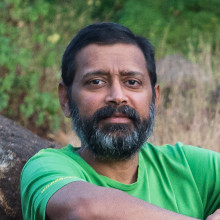[From Unsplash]
“Everyone likes birds. What wild creature is more accessible to our eyes and ears, as close to us and everyone in the world, as universal as a bird?”
~ David Attenborough
I was initiated into birdwatching while in school in Chennai. We would attend the screenings of David Attenborough’s documentaries, either at the British Council library campus on Anna Salai or at the nature camps, organised by the World Wild Fund (WWF). And from class seven onwards, we began our birdwatching expeditions—a passion and a hobby that has lasted now for four decades.
During this period, I've made birding trips to almost all the states across the country covering every important birding destination. I’ve had the opportunity to interact and travel with a community of fellow birders, many of whom stay connected on a regular basis. And what's more, it has fuelled my interest in photography, travel and not the least, conservation. My 10-year-old son too is now actively into birdwatching. And I’ve made several trips with the family and solo as well.
Why am I sharing this with you? During the last two years of the pandemic, I’ve noticed that the interest in birding has touched a new high. Perhaps with good reason. People need an escape from being cooped up at home. People of all ages and backgrounds are taking to watching birds. Instead of whiling away time with the family at a mall or with friends at the local pub, birdwatching has emerged both as a source of exploration and positivity, reflecting our deep and enduring connection to nature.
During my trips, I’ve often met young teenagers (or even pre-teen kids) who’ve prodded their parents to go on birding expeditions or plan even a simple half day outing over the weekend.
The change of pace during the pandemic has allowed us the opportunity to notice birds nearer home and from our windows and balconies—something that was perhaps always there, but somehow neglected all this while! And my favourite pair of binoculars, stored away safely for my outings, now finds a place in the living room, ready to spot a honey buzzard or a grey francolin from our balcony.
If you’ve not joined the birding bandwagon yet, this piece is meant for you. We’ll walk you through the basics—the where, how and what. Plus, we’ve put together a specially curated set of recommendations of edge-of-town birding destinations across six major cities in the country. These destinations are easily accessible, don’t need elaborate planning and can be covered over the weekend. They help combine a bit of travel and quality time with the family, provide a much-needed experience of the outdoors—and an opportunity to learn about birds, easily the most evocative, widespread and accessible species in the whole wide world.
Our hope is that by the end of this piece, it should have sufficiently whetted your appetite. And you should be ready to experience and explore this amazing world of birds. But before we dive in, let’s pause and consider an important question.
Why birdwatching?
There are many obvious benefits of birdwatching that are well documented and researched. They say it hones your power of observation, builds focus and concentration in this age of distraction. And there’s even this Harvard Business Review article by two birdwatching stalwarts David Sibley and Julia Yoshida, on how birding builds an increasingly important skill: pattern recognition.
While all of this is true, let me tell you my side of the story.
Over the years, birdwatching and exposure to nature has profound positive effects on not only physical health, but also mental well-being. I know this from my own experience. In 2017, I was diagnosed with lung cancer. On the road to recovery, I discovered birdwatching’s therapeutic value. Just reading about birds and birdwatching (and more generally, wildlife) would be a huge mood elevator. Three months into the treatment, I started going on trips, first close by and then to more distant locales. Less than a year after the diagnosis, we took a trip to possibly India’s remotest birding destination—Narcondam Island—traversing about 200 nautical miles of open sea in a fishing boat, to watch an endangered hornbill. Waking up on a white beach to raucous calls of an endemic multi-coloured hornbill in an emerald jungle felt like instant and wholesome therapy!
Now, let’s scan the horizon.
What’s the essence of birdwatching?
Birdwatching is a very flexible hobby. You can tailor it to fit your needs. You can spend as much time as you want. The best way to start is to get outdoors, move around and simply observe what's going on. Growing up in Chennai, our early outings were close by for about half a day. We’d aim to be back home by lunch. These then gradually turned into overnighters and later, well-planned multi-day trips.
Nowadays, I plan two kinds of trips: exploratory 7-10 long trips, typically to the northeast, and family adventure trips lasting 4-5 days centred around one destination, typically a national park.
Fundamentally, birdwatching is about identification. It is a science as well as an art. And you can develop both quite rapidly, if you keep at it.
Bird identification is as much about recognizing bird sounds and calls, as it is visual. As they say, you can only see straight ahead, but you can hear 360 degrees at once. It is as critical to observe the calls and songs of a bird along with its visual markers. In the field quite a few species are heard rather than seen.
Birdwatching is best learnt intuitively. And therefore, learn to go with the flow. And do it for fun, instead of focusing too seriously on a prescribed process.
How does one pick the locales?
You don't have to do an expedition to some deep rainforest to go birding. You can do it in your own backyard or in your neighbourhood (“patch birding”). You can take short outings to nearby hotspots and every major town in India boasts of several such spots.
At first, aim for what’s accessible. And that will vary from city to city. It could be a wetland (a lake or a marsh) or a woodland/park. Sighting of birds is also much easier here as these places are usually wide-open spaces. In Chennai, we had the Adyar estuary and Guindy national park. In Bengaluru, you have Lalbagh or Hessarghatta.
Special: Click on this image for a specially curated list of the best birding destinations near your city.
Once you’ve picked your destination, the next decision is how best to plan your outing.
What’s a good way to prepare for these outings?
Initially, I’d recommend that you go with a group. There are many established groups that do regular outings to birding spots. I’ve myself led several walks in the nearby Valley School in Bengaluru.
You will learn a lot from these outings as it is likely to be led by a birding veteran. There are simple tactics that need to be kept in mind: don’t be in a rush, instead step back for a clearer view.
Birdwatching demands long periods of focus and consciously cultivating an inner calm. Those who are new to birdwatching might find it a tad difficult to begin with.
There’s invariably a period of waiting, watching, trying to stay calm and silent. Try tuning into the bird calls. Avoid the temptation of shouting excitedly during a bird sighting.
All these trips are family friendly and after just a couple of these trips, you can start planning your own.
What’s the gear that you need?
One of the best things about birding is that you need very little equipment. It is easy to get started and it costs nothing to watch the birds around you. Of course, a pair of binoculars definitely comes in handy in making it more enjoyable and interesting. Imagine a sudden explosion of colour and beauty in close-up when you raise your binoculars to your eyes! Be ready to be hooked for life!
Choosing the right pair of binoculars is absolutely critical. This can make or break your birdwatching experience. Unlike in my growing up years, you no longer have to wait for an uncle returning from the US to bring you a random model. Almost all major brands of binoculars are now available in India.
A good birdwatching binocular is an 8×42 model. This means a magnification of 8 (images appear 8 times closer) and the objective (the lens element closer to the ‘object’) lens diameter is 42 millimetres. The latter is the measure of the light that enters the binoculars. Of course, there is no ironclad rule that 8x42 is the only model of choice. People prefer minor tweaks around the base model. I started out with a 7x35, and today I use a compact 8x30 (it compromises on the overall light entering the system) but it is secondary to my photography rig and doesn’t impede its usage. (Here's a useful guide to the best binoculars for birding across all price ranges and most models are available in India.)
A good field guide—the top 4 listed in this resource are recommended—is useful to identify birds in the field by matching the descriptions and illustrations. Plus, a notepad and pencil are some of the essential items to round off a birder’s toolkit. Carry your stuff in a backpack so you are hands free and binoculars around your neck. Stop and remove your bird guide, whenever you’re struggling to ID a bird.
Do keep in mind that you are entering their space. Birds are very sensitive to human presence. So, try to blend in and remain as inconspicuous as possible. Make sure that you wear comfortable, dull coloured, long-sleeved clothes that allows you to blend in with the habitat. A hat or a cap helps beat the heat. Decathlon has made it very convenient to outfit the modern birdwatcher—with apparel, accessories and equipment, all organised by sport categories.
Dig deeper:
- An excellent article on the joy of birdwatching: Top 10 Reasons to Be a Bird Watcher (Read time: 4 mins)
- And another article on How Nature Improves Our Mental Mindsets (Read time: 4 mins)
- Resources for Indian birders
- Finding birds with eBird from the Cornell Lab of Ornithology
(If you have more questions on how to cultivate the hobby, please write to us at help@foundingfuel.com. Our experts Ramki Sreenivasan and Satish Pradhan will be happy to respond to you).
(With inputs from Satish Pradhan)

